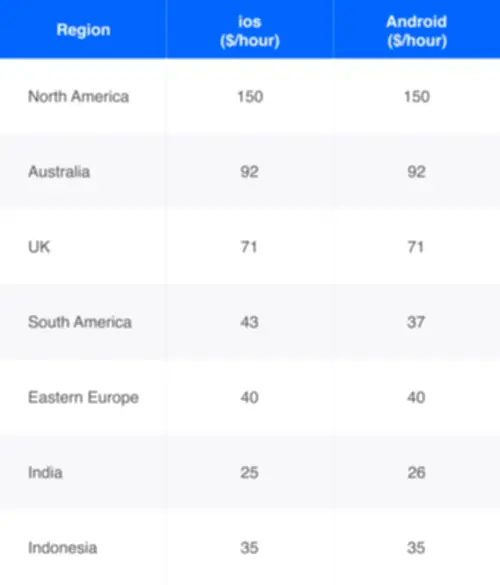Software development
What Is Container Orchestration? How It Works & Use Circumstances
Orchestration describes the method of managing multiple containers that work together as part of an software infrastructure. OpenShift is a cloud improvement platform by Red Hat built on each Docker and Kubernetes and powered by an open supply Kubernetes engine. This platform as a service (PaaS) makes use of Kubernetes as a container orchestration engine to enable builders to run and construct purposes anyplace. It helps develop, deploy, and manage cloud-based functions, allowing builders to work in a self-service method. When deploying a model new container, the container administration device automatically schedules the deployment to a cluster and finds the best host, taking into account any outlined requirements iot cybersecurity or restrictions.
Amazon Elastic Kubernetes Providers (eks)
The framework is built on an enterprise-grade Linux Operating System that allows you to automate the lifecycle of your containerized software. This enables you to simply handle all your workloads using a container to virtualize each host. More so, with its varied templates and prebuilt pictures, OpenShift allows you to container orchestration system create databases, frameworks, and different utility companies easily.
A Short Historical Past Of Working Apps
Orchestration engines like Kubernetes are complicated, consisting of several key technological elements that work in unison to manage the lifecycle of containers. By understanding key components, you gain an understanding of the way to greatest utilize containerization applied sciences. SUSE Rancher is a service built for the straightforward administration, group, and administration of 1000’s of Kubernetes clusters on any infrastructure. Containers make managing assets simpler since they do not embrace working system (OS) pictures. This makes containers more efficient and lightweight to operate than conventional purposes. Enhance your infrastructure’s availability, scalability and safety by exploring IBM’s load balancing choices.
How Do Enterprises Handle Container Orchestration?

Containers are a foundational part of modern cloud methods, but they’re tricky to handle. Kubernetes is the most popular orchestrator, but other choices could be better depending on your needs. Additionally, instruments like Rancher and Portainer simplify the interplay and management of container clusters.

How Does Container Orchestration Remedy These Problems?
GKE is constructed on Google’s infrastructure, GKE promotes safe and safe scaling of containers, ideal for cloud-native software management. Another key function of container orchestration is health monitoring and self-healing, where platforms constantly monitor the well being and performance of containerized functions. If an application or container becomes unhealthy or unresponsive, orchestration systems can automatically restart or reschedule containers to hold up the specified state of the applying. This proactive method to fault detection and remediation helps minimize downtime and ensures the reliability of containerized workloads. Container orchestrators assist using containers across totally different clouds, data facilities, and environments.
As the build part concludes, the pipeline executes the code in a controlled setting. Running the container picture in a staging environment can be accomplished utilizing a container orchestration tool similar to Kubernetes. This essential step involves the team conducting a series of automated checks to validate the appliance’s functionality. Developers actively search out and tackle bugs, ensuring the progression of only high-quality code through the pipeline.
Learn how adopting Kubernetes can optimize your IT infrastructure and increase operational effectivity. That means there’s a coaching overhead to contemplate when you select to run the orchestrator your self. If you’re looking to take full advantage of the flexibility and scalability of cloud computing, you will need to contemplate a container orchestrator. Ultimately, the choice of software is decided by your software’s requirements, current applied sciences, desired control stage, and the way you’ll handle the orchestrator. Ensure easy integration with your current CI/CD pipelines, cloud monitoring systems, and growth practices.
When you change a container’s duplicate rely, the swarm manager will routinely create or take away containers to maintain up the desired state. Swarm also routinely detects worker failures and assigns substitute containers to healthy hosts. Several completely different OpenShift editions can be found, including both cloud-hosted and self-managed variations. The fundamental OpenShift Kubernetes Engine is promoted as an enterprise Kubernetes distribution.
- Docker simplifies application deployment with light-weight, transportable containers, making certain consistency, scalability and efficiency throughout environments.
- More broadly, it helps you totally implement and rely on a container-based infrastructure in manufacturing environments.
- An orchestrator automates scheduling by overseeing sources, assigning pods to explicit nodes, and helping to ensure that resources are used effectively in the cluster.
- If the organization expects high traffic between the containers, this could cause some issues.
- Container orchestration helps reduce the problem of managing resources in containerized applications.
- It surveyed a number of tools, discussed some challenges posed by container orchestration and how one can tackle them, and defined how CI/CD can simplify container orchestration by way of automation.
To be succesful of perceive container orchestration — or in simple words, “container management” — we want to understand how containers got here into existence and the real-world problems they remedy. During growth, the container engine facilitates rapid prototyping and testing, permitting developers to iterate rapidly and efficiently. As the applying matures, the orchestrator transitions it into manufacturing, offering a strong and scalable basis for handling real-world workloads. The container engine creates and packages individual containers, whereas the orchestrator engine manages and orchestrates a quantity of containers across a distributed infrastructure.

While containers assist us package applications for easier deployment and updating, we need a set of specialized instruments to handle them. Offering an various selection to conventional virtual machines, containers share the underlying OS kernel and devour fewer assets. This efficiency translates into reduced operational costs and improved utilization of computing sources, a key benefit for enterprises managing large-scale applications. In fact, complexity must be the first rule of thumb for determining whenever you need a container orchestration tool. Technically, if your application makes use of more than a few containers, it’s a candidate for orchestration. In 2015, when both Docker Swarm and Kubernetes were released, Apache Mesos was the most broadly adopted container management software, with Twitter, Verizon and Yelp its most high-profile customers.
This permits groups to develop and deploy in rapid, iterative cycles and release new features and capabilities quicker. Container orchestrators guarantee every little thing wanted to run an software is there. The orchestrator ensures that applications maintain running, even if individual containers go down, and so they enable capability to be added on demand.
Automated instruments compile the source code into binary artifacts poised for deployment utilizing a software like Docker or BuildKit. Once the container image is constructed, it’s stored in a registry corresponding to Docker Hub or Google Artifact Registry. At the center of Kubernetes lies its management plane, the command middle for scheduling and managing the application lifecycle.
After connecting your cluster, you probably can deploy your initiatives straight to Kubernetes by using GitLab’s Auto Deploy capabilities. There’s also help for canary deployments and safe tunneling when you install the GitLab Agent inside your cluster. KubeSphere may be deployed to an existing Kubernetes cluster or launched as a standalone Linux binary.
Furthermore, confirm compatibility together with your most popular container runtimes, programming languages, and frameworks. It permits you to function Kubernetes everywhere, run within the cloud, on-premises, or at the edge. Since pods are a replication unit in the orchestration platform, they scale up and down as a unit, meaning all the containers within them scale accordingly, no matter their individual needs. Containers on a failed node are rapidly recreated by the orchestration device on another node.
It additionally comes with straightforward setup and administration; that’s, it has the potential to manage a cluster of Docker nodes as a single unit. Enterprises that have to deploy and handle hundreds or 1000’s of Linux® containers and hosts can profit from container orchestration. Development teams use LaunchDarkly feature flags to simplify migration use instances, particularly in monolith to microservices scenarios. Feature flags give teams a nice deal of management when performing these migrations, both from a characteristic launch standpoint, as nicely as person focusing on.
Transform Your Business With AI Software Development Solutions https://www.globalcloudteam.com/ — be successful, be the first!


